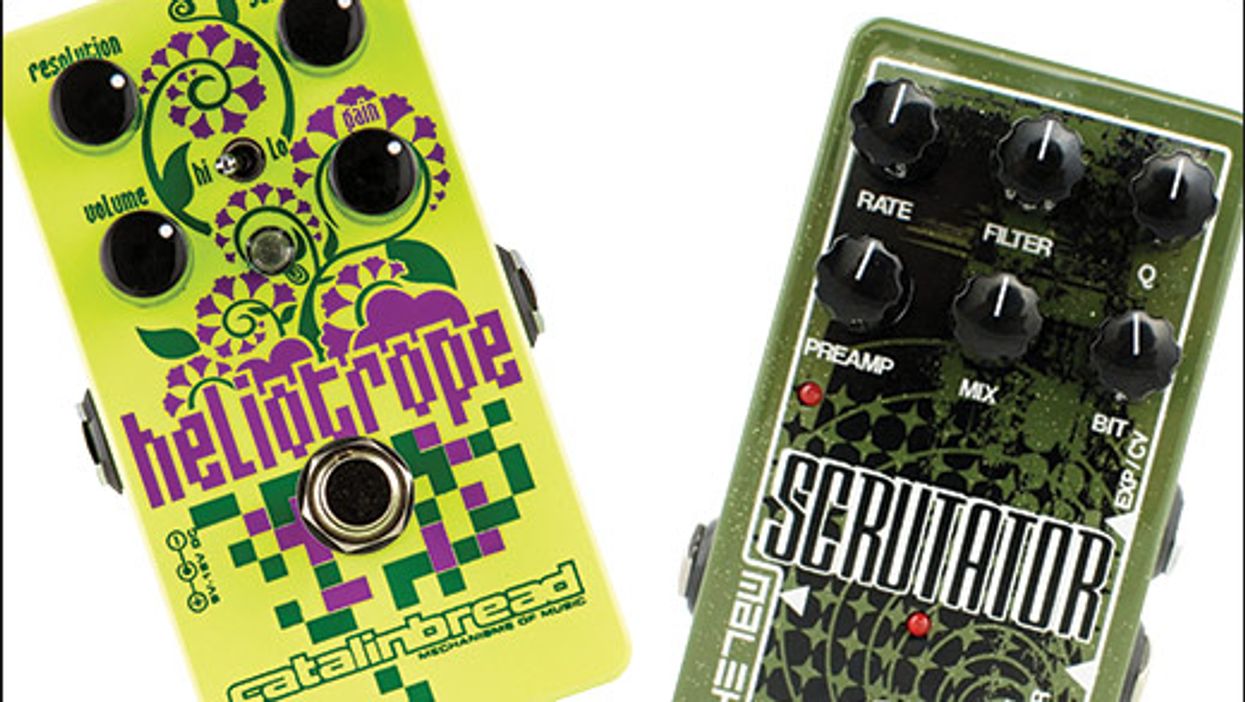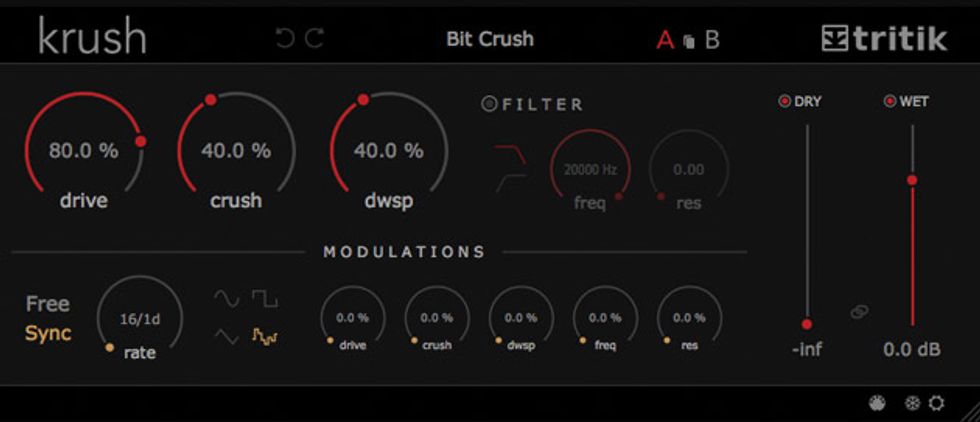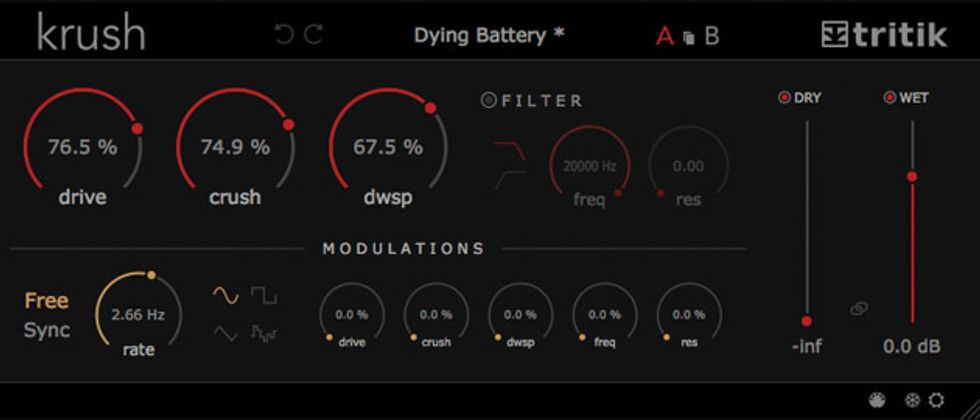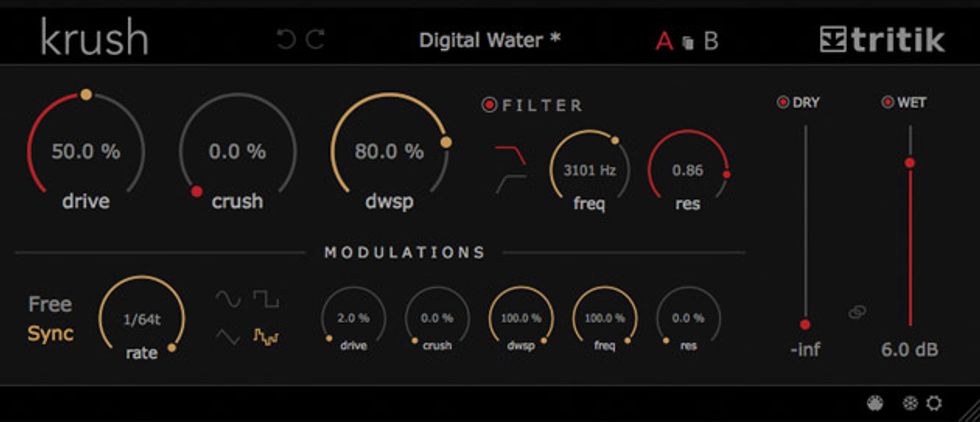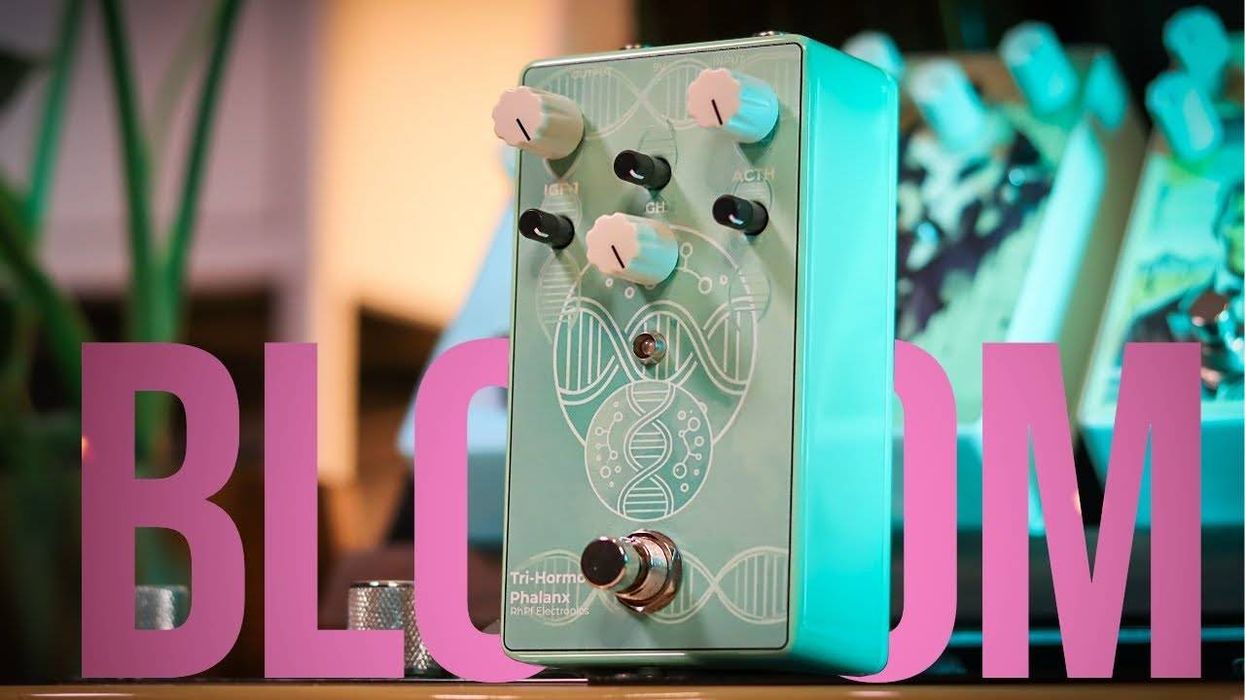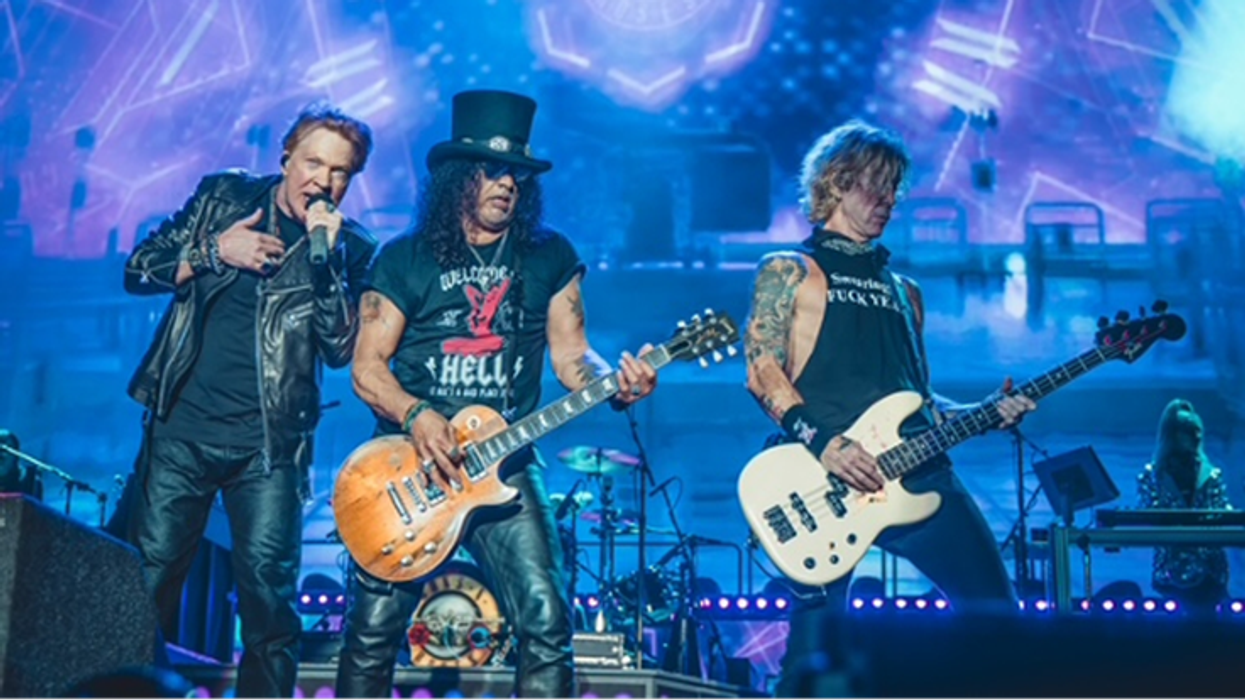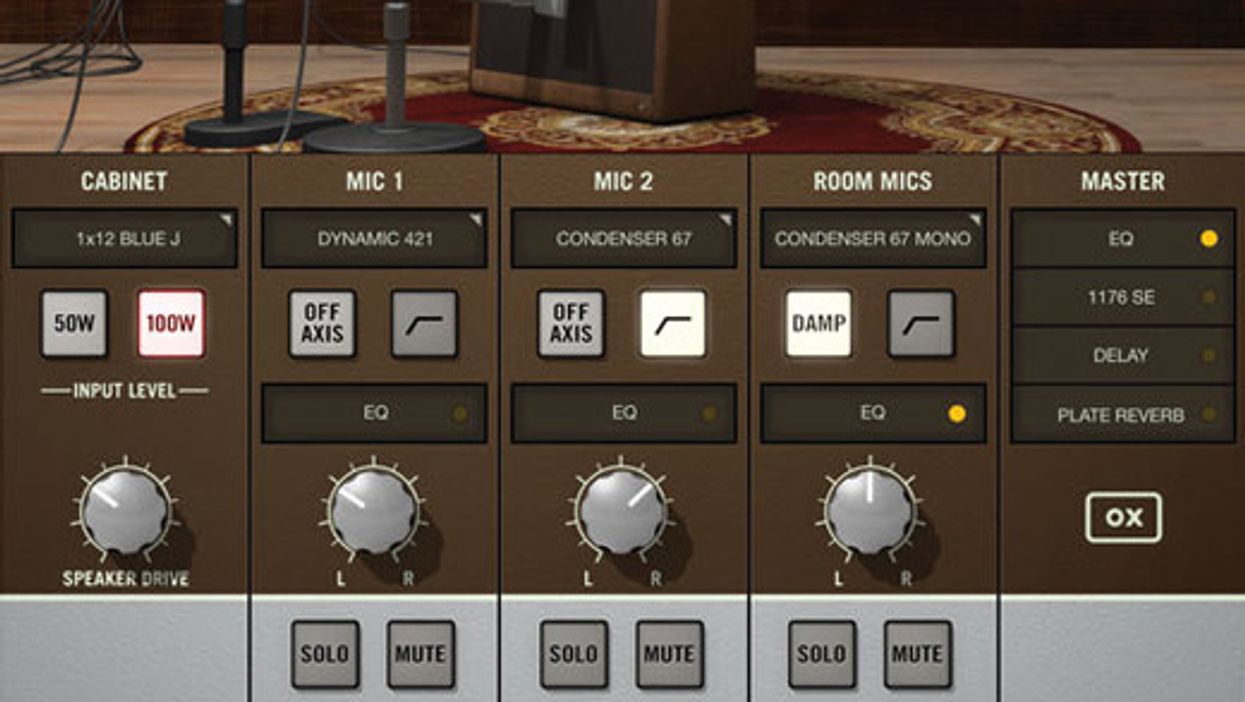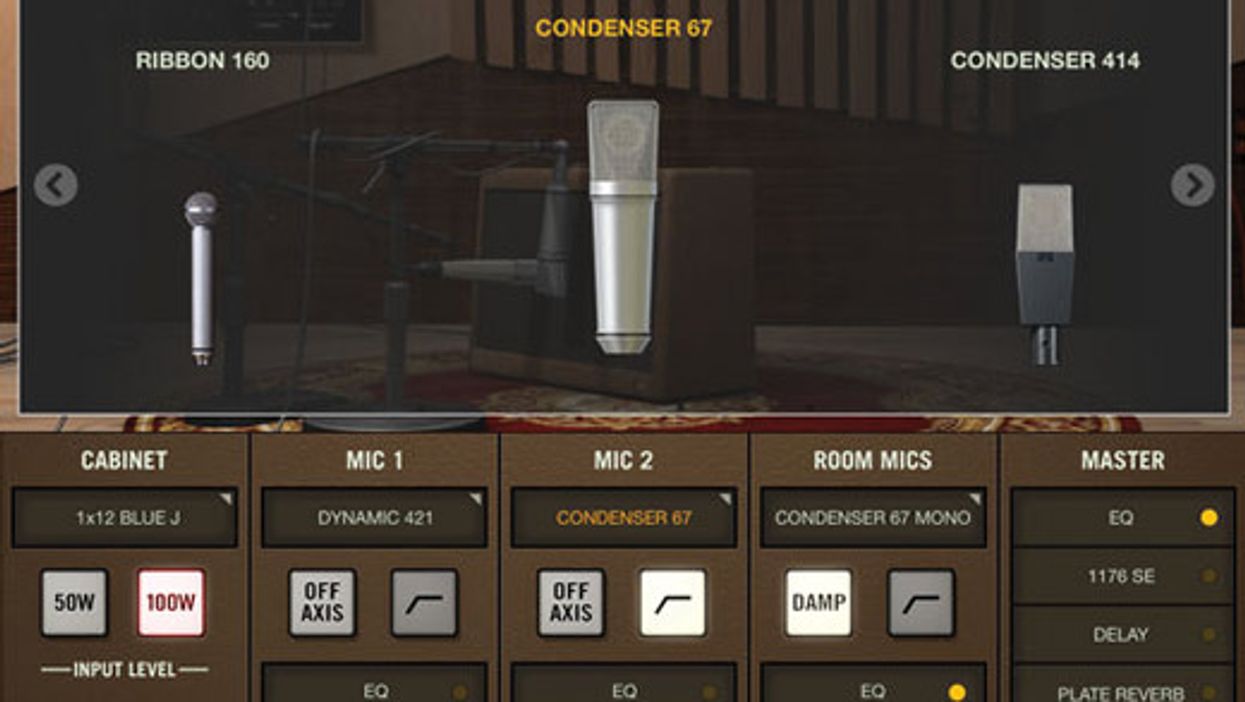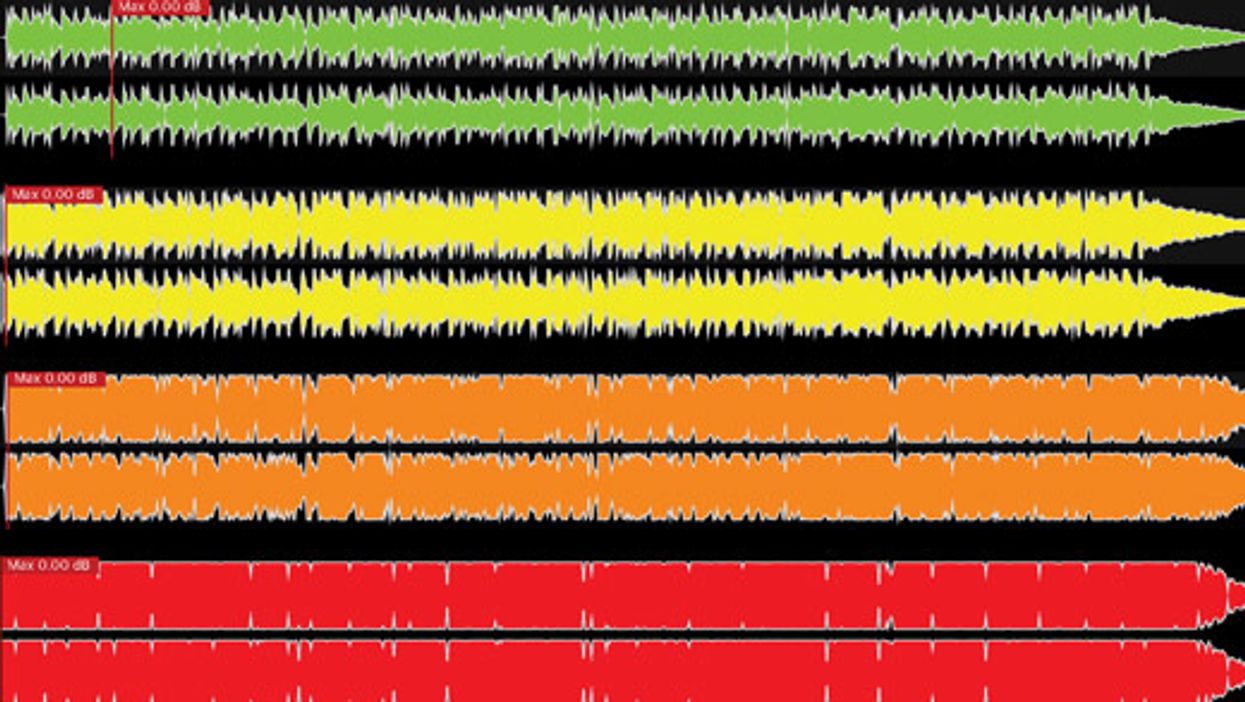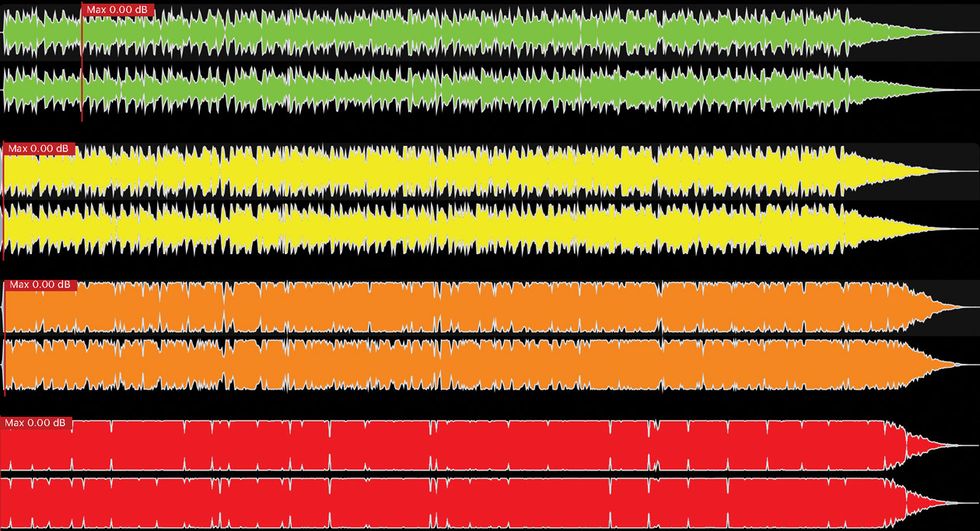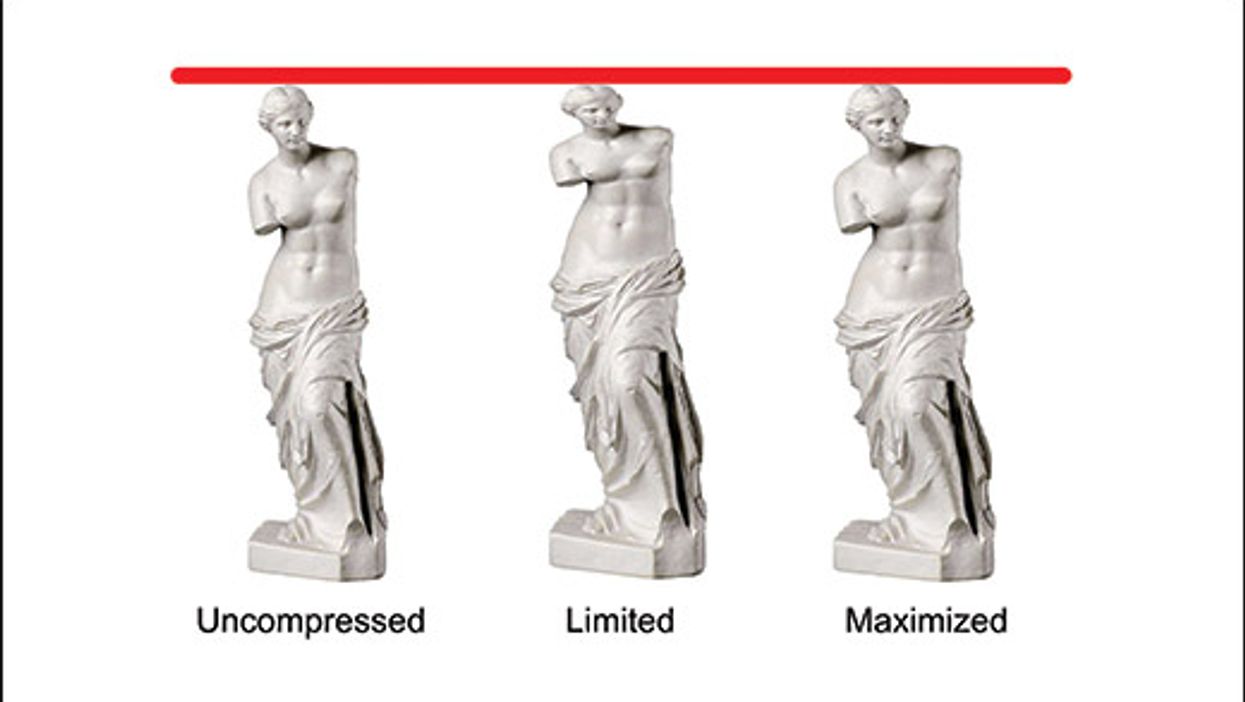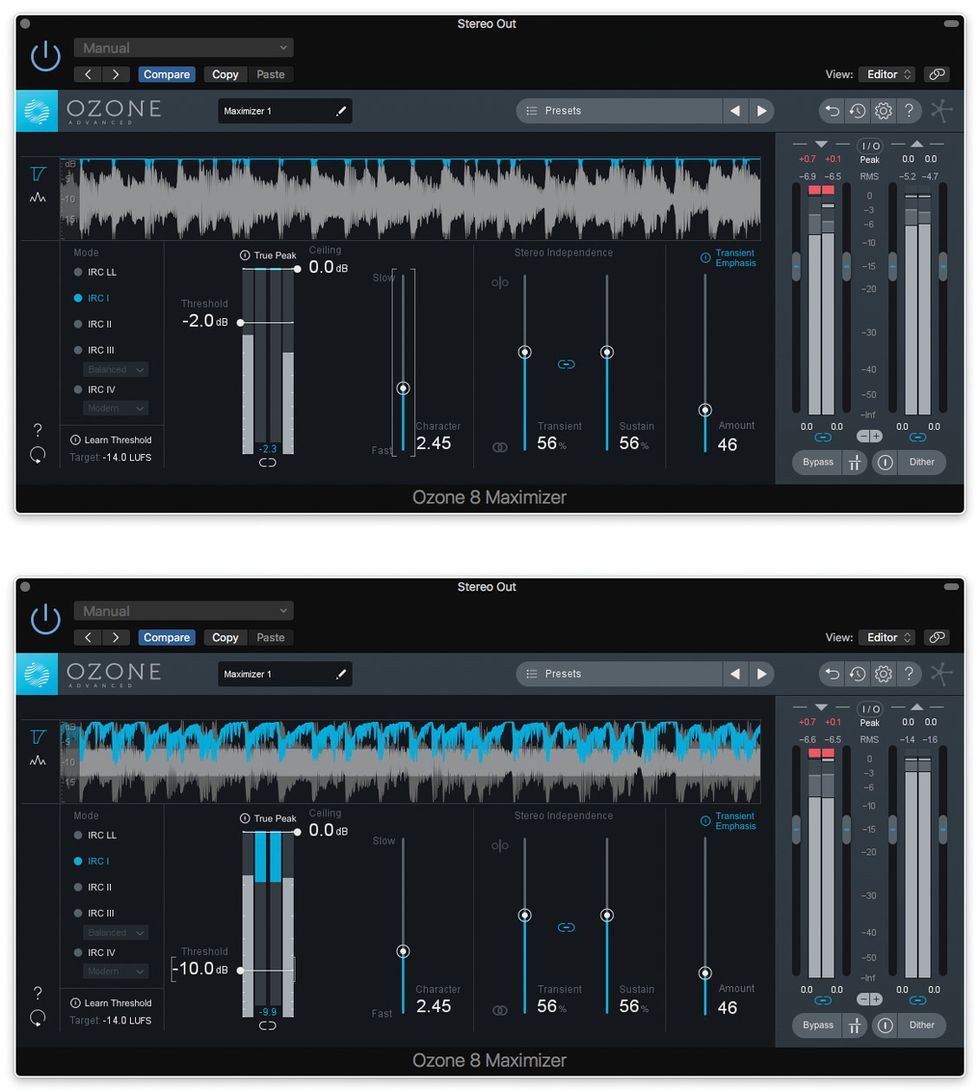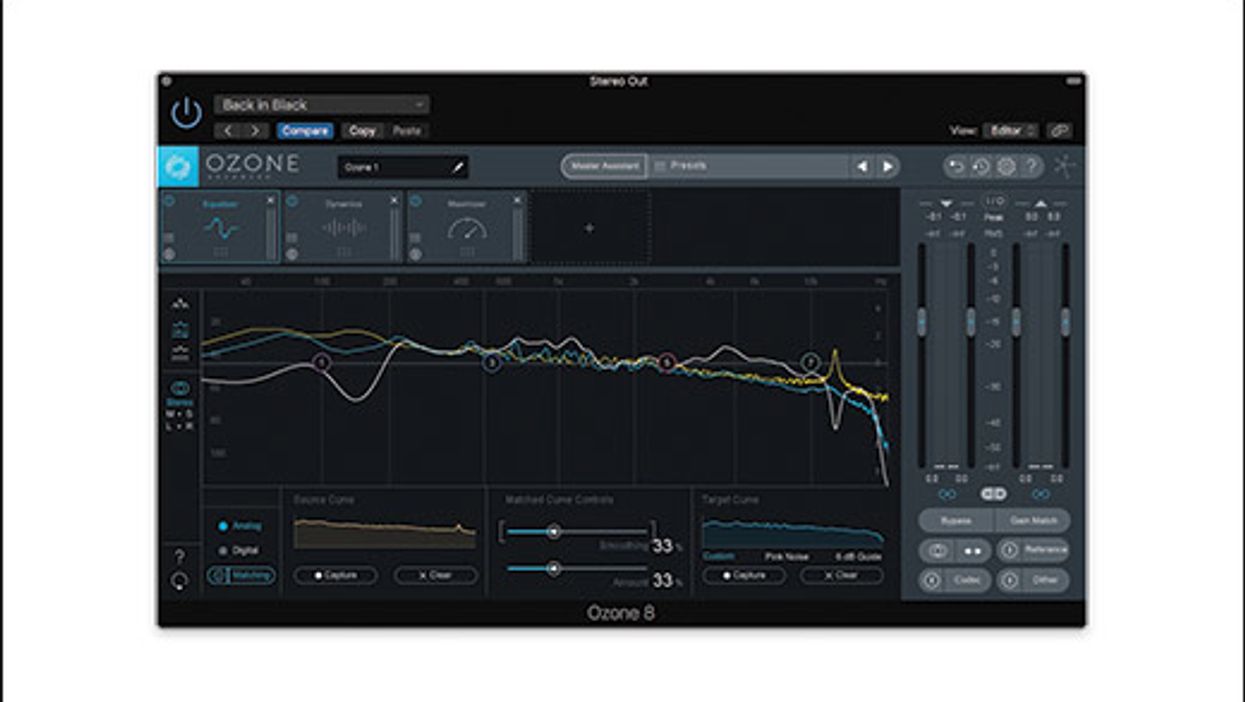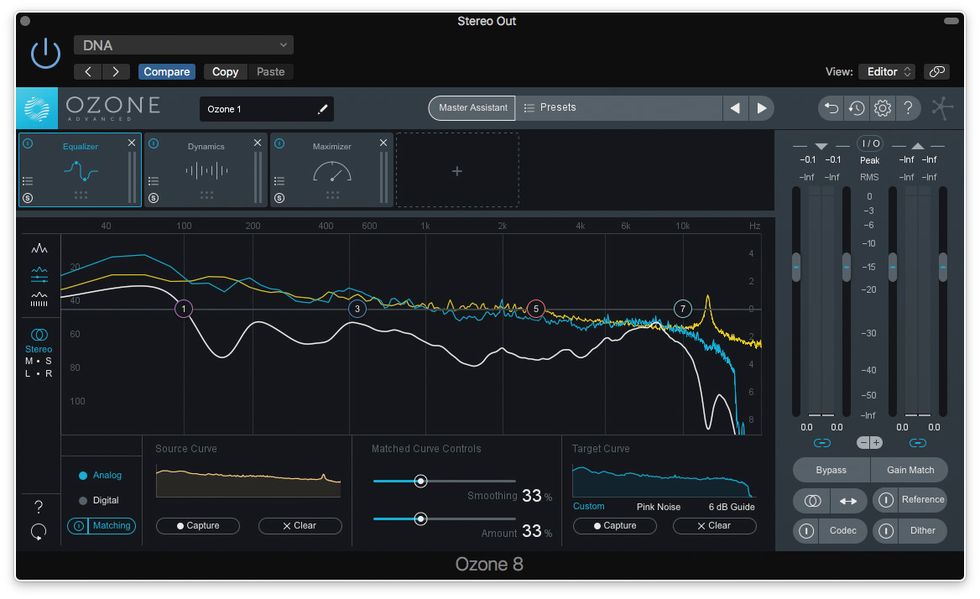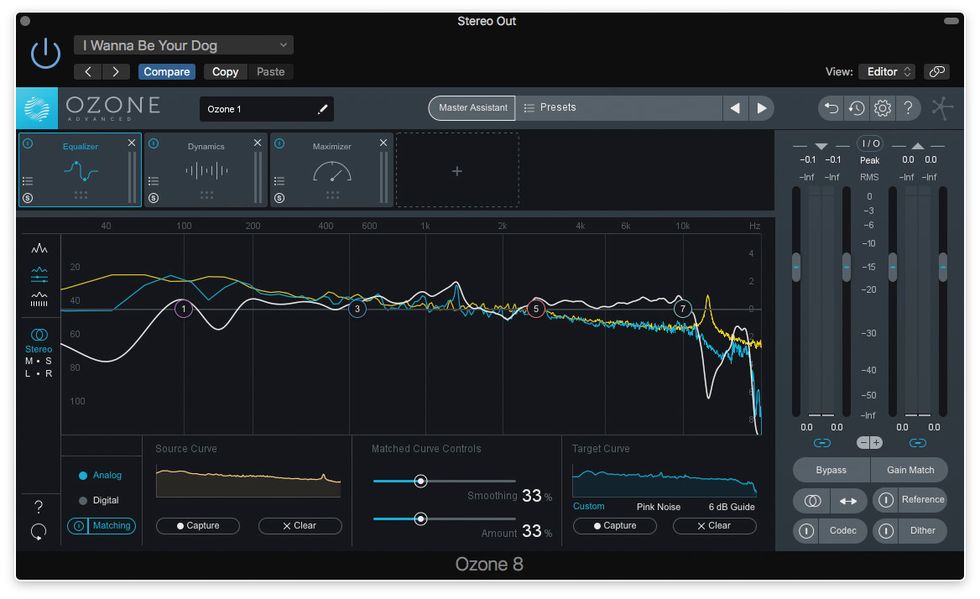Imagine an effect that can single-handedly destroy everything guitarists traditionally love about tone. How awesome would that be?
Don't dream it—use it! It's called bitcrushing, and it's been around since the dawn of digital audio. This harsh, clangorous distortion is everything that “classic rock crunch" is not. It produces dissonant, chaotic sounds with sharp, steely edges. Taken to extremes, bitcrushed audio degrades into insect-like clicks and farts, often with bizarre and unpredictable rhythmic side effects.
Yes, it's that cool.
Crush, kill, destroy. Admittedly, large doses of bitcrushing can be hard to swallow. But applied judiciously, the effect can animate an arrangement with unexpected colors and quirky rhythmic glitches. Also, bitcrushed sounds can cut through anything, so they can be especially useful for adding guitars to dense EDM tracks. Bitcrushing is the hydrochloric acid of audio.
Many DAWs include bitcrushing plugins, such as Ableton Live's Redux, Reason's Scream, and Logic Pro's imaginatively named Bitcrusher. There are also some great free bitcrushing plugins. In fact, Tritik's Krush is so cool that you should probably just grab a copy now. It's free, feature-rich, and fully functional, and there are versions for both Mac OS and Windows. I used Krush to record all the audio for this column.
Do the numbers. While you're downloading, let's discuss the effect. Like all things digital, bitcrushing involves numbers—two, specifically. The first is bit depth, which is roughly akin to resolution in a photograph. If you compare, say, a studio recording at its original 32-bit depth and the same recording at a CD's 16-bit rate, you probably won't perceive a loss of highs or lows. But the 16-bit recording probably sounds “shallower." If you listen on studio monitors with your eyes closed, the higher-bit-rate recording can seem to have a deeper “soundstage," with more of a sense of instruments being nearer and farther in relation to the listener. At lower rates, it can sound like the musicians are all lined up next to each other on a narrow stage. Dynamics may feel relatively squashed, and the quietest sections—the final ring of a decaying chord, for example—can feel grainy and relatively low-res.
But we're not talking about the usual “dumbing down" that occurs when transferring 32-bit recordings to CD-quality 16-bit. Heavily bitcrushed sounds display increasing amounts of noise. Pushed to the limit, you get mere pops and clicks. In Clip 1, a guitar phrase gets subjected to decreasing bit rates. Behold the devastation and weep!
The other important number is sampling rate: the higher the number, the higher the fidelity. We listen to CDs and MP3s at 44.1 kHz, though we often record at higher rates such as 96 kHz or 192 kHz. Meanwhile, a talking musical toy from the 1970s might have had a 10 kHz sampling rate.
When you drop the rate below 20 kHz or so, you audibly and increasingly lose high end. Go low enough, and the sound degrades into clangorous noise. This process is called downsampling. In Clip 2, the sample rate descends from full frequency to a coarse grumble. Can you hear how low-rate settings might work as (or at least with) bass sounds?
Those are the basics, though some bitcrushing plug-ins add additional tools. Krush is a great example. Check out the interface (Image 1).
Image 1
Two of the big knobs control bit crushing and downsampling (labeled “dwsp"). The leftmost knob sets the drive level feeding the effect. Higher drive settings are wilder and noisier.
To the right of the big knobs are simple low-pass and high-pass tone controls that siphon off highs and/or lows downstream from the digital distortion. The res control adds resonant feedback at the filter cutoff frequencies. At the far right are wet/dry faders. (All examples heard here are 100 percent wet.) The bottom row is the modulation section, with an LFO that can sync to a track's metronome. There are four modulating waveforms to choose from. The remaining knobs specify which parameters are subject to modulation. Impressive for a free plug-in, huh?
You can combine bitcrushing and downsampling, as heard in Clip 3. (The settings are those shown in Image 1.) Obviously, bitcrushed sounds can be so degraded that they have no definite pitch. That's not a bad thing, necessarily—you can say the same about many cymbal and drum sounds. But as you downsample, there's a strong resonance at the filter cutoff point, which you can use to roughly tune the effect.
You might not identify the primary pitch in Ex. 4 as D. But when the Dm bass-synth riff enters after four bars, they kinda/sorta cooperate harmonically.
Image 2
The heavy downsampling in Ex. 4 yields a more bass-like tone. Image 2 shows the settings.
Image 3
Now let's try incorporating Krush's modulation section, as seen in Image 3. With the lowpass filter resonance set high and fast 64th note triple modulation routed to both the filter frequency and the downsampling amount, you get the splish-splash water effect of Clip 5.
Naturally, once you capture such sounds within your DAW, you can stir up additional trouble. In Clip 6, for instance, I doubled the guitar recording, processed each clip with its own Krush setting, and panned the two tracks in stereo. Note how the glitching adds rhythmic tension as it clashes against the quantized electronic beats. It's similar to the way rhythmically imperfect loops can add tension and character to hip-hop tracks.
Bring the noise. Here we've looked at downsampling within your DAW. But you can create similar effects without a computer thanks to recent bitcrushing stompboxes such as Catalinbread's Heliotrope and Malekko Heavy Industries' Scrutator, which convert your analog signal to lo-res digital.
Obviously, these flavors aren't for everybody. But before you shriek “never!" I urge you to explore these sounds in musical contexts. Bitcrushed audio can be brutal on its own, but you may be surprised by how often this abrasive effect can lend texture and interest to a mix, especially alongside less extreme sounds.
